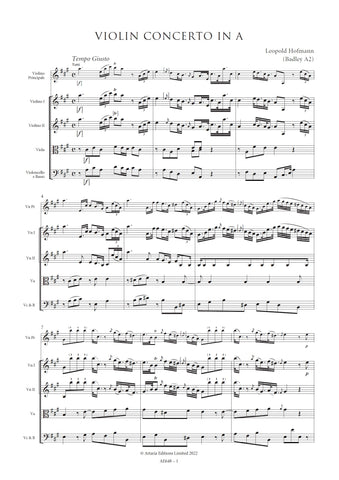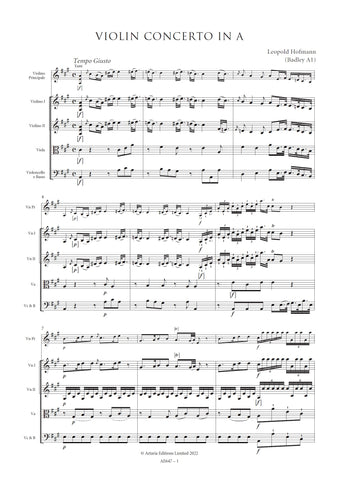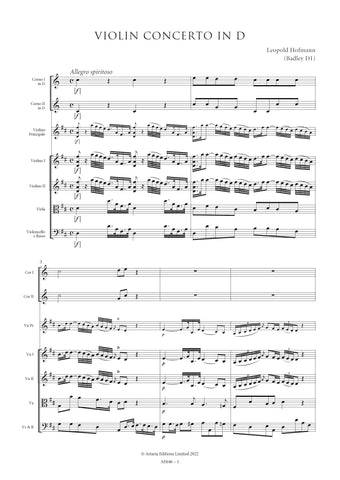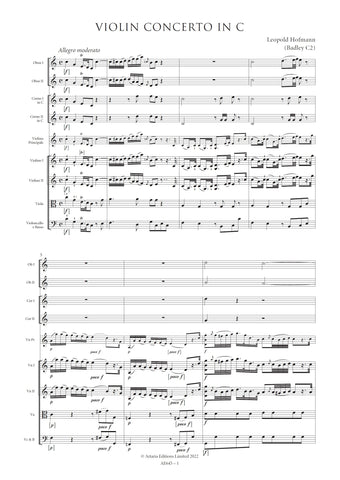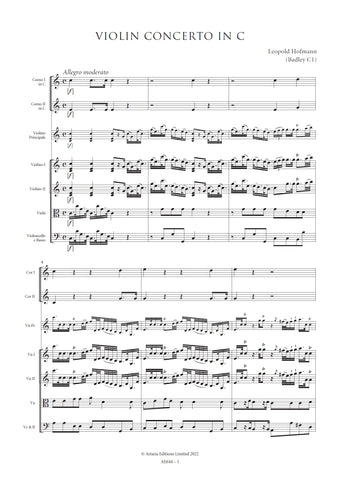Hofmann, Leopold: Missa in D (Badley C13b) (AE624) – sheet music
Previous Product Next Product
Description |
Hofmann, Leopold (1738-1793)
|
||||||||||||||||||||
Details |
Missa in D provides a fascinating illustration of the flexible approach to instrumentation that was such an integral part of professional performance in the eighteenth century. In the later eighteenth century there was a growing preference for more compact settings of the mass. One of the most attractive features of Hofmann’s masses is the frequent inclusion of concertato instruments. The organ is most commonly used – sometimes in an individual movement such as the Benedictus, and on other occasions throughout the entire work – but Hofmann also writes beguiling solos for violin and flute and frequently employs pairs of violas or trombones as soloists. For instance, there is even a dazzling clarino solo in the Quoniam of the Missa Sancta Barbaræ (Badley C2), but this part is also assigned variously to an oboe or, in a substantially reworked form, to the organ. No fewer than twelve masses attributed to Hofmann in the author’s own catalogue exist in more than one version and one work is preserved in three distinct forms. There are even variants of variants that are complex enough in detail to suggest that they may have originated with the composer. Nonetheless, it seems more likely that Hofmann adapted works with concertato voices for performance without soloists than expanded existing works in a manner that made them less practical for general use. This is borne out by the surviving copies of these masses which overwhelmingly favour the choral versions. That it was principally the employment of elaborate solo vocal parts that limited the dissemination of certain works is clear from the distribution patterns for two of Hofmann’s most elaborate mass settings [C2 and D3] which circulated more widely in their choral versions even although the instrumentation of the two versions was virtually identical. But it is also evident that in the later eighteenth century there was a growing preference for more compact settings of the mass, one of many factors that led to the decline of the so-called cantata mass. |
||||||||||||||||||||
Score Preview |




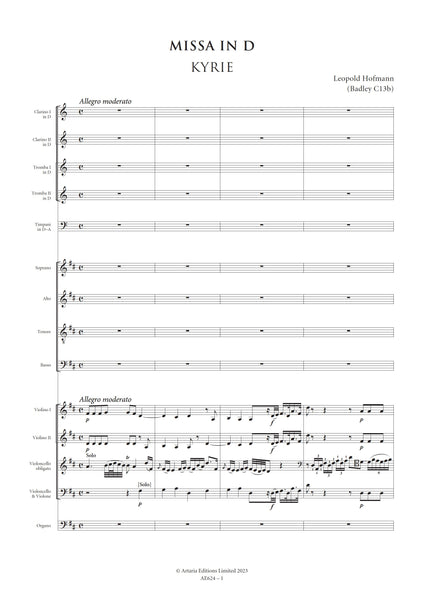
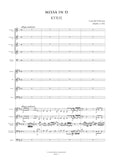
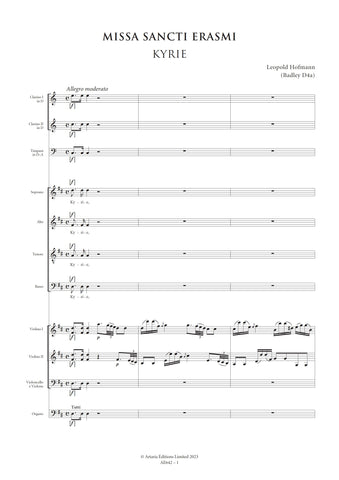

![Hofmann, Leopold: Missa Sancti Erasmi (Badley D4a) [Vocal Score] (AE642/VS)](http://www.artaria.com/cdn/shop/files/ae642vs_1stpage_large.jpg?v=1697798128)
![Hofmann, Leopold: Missa in D (Badley C13b) [Vocal Score] (AE624/VS)](http://www.artaria.com/cdn/shop/files/ae624vs_1stpage_large.jpg?v=1697794050)
